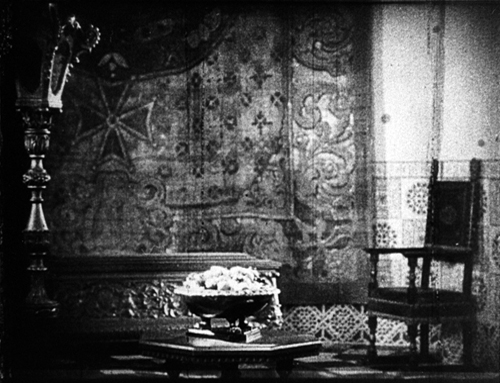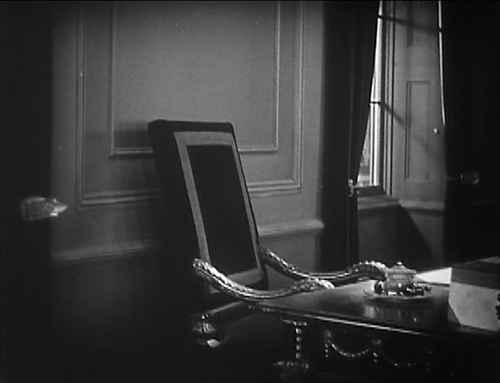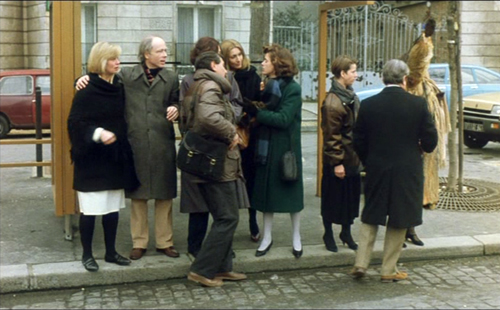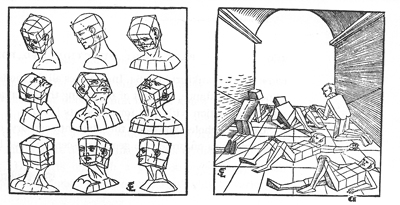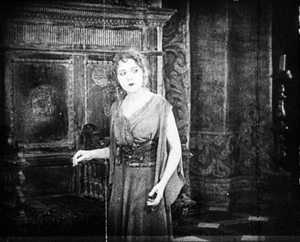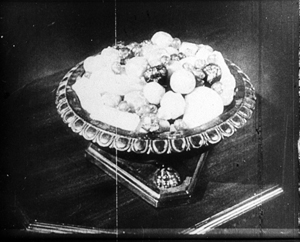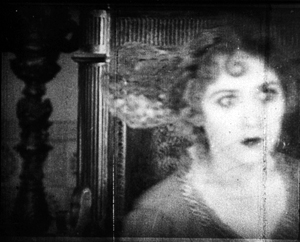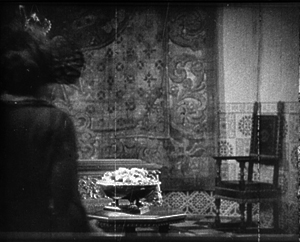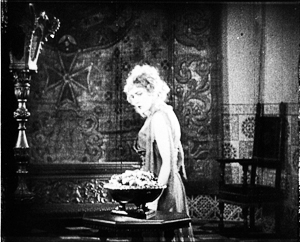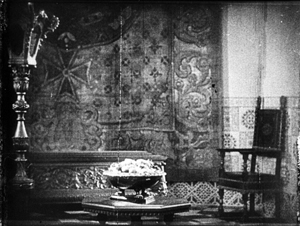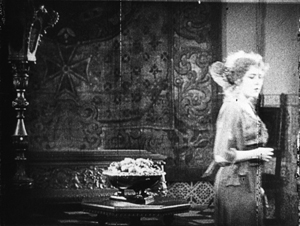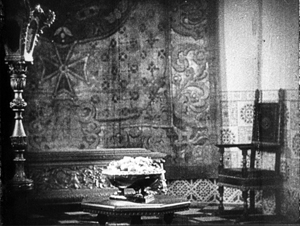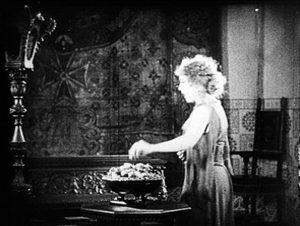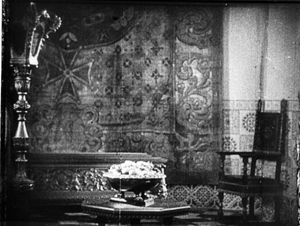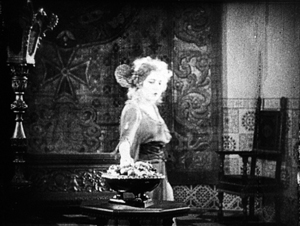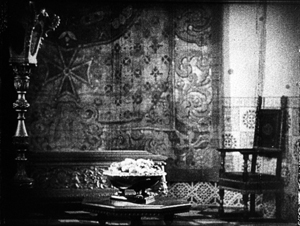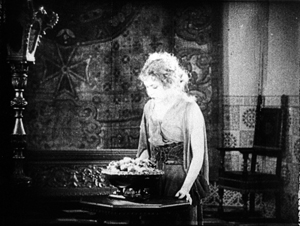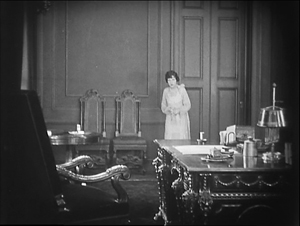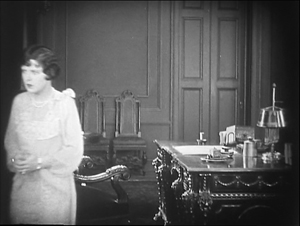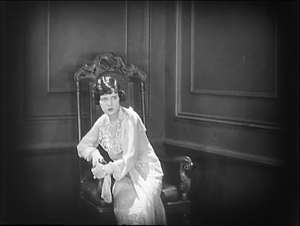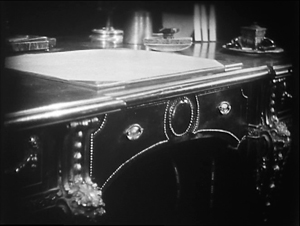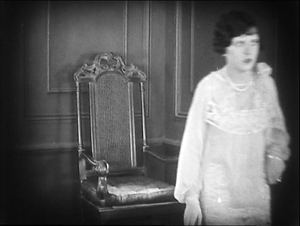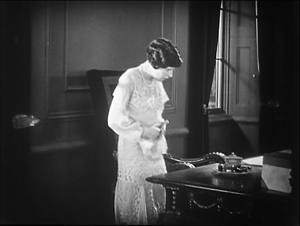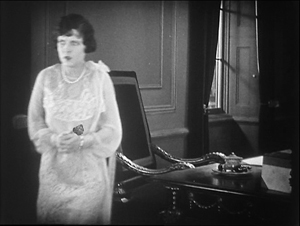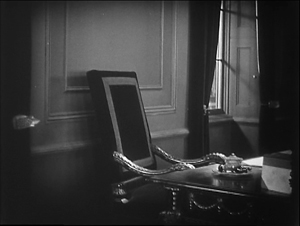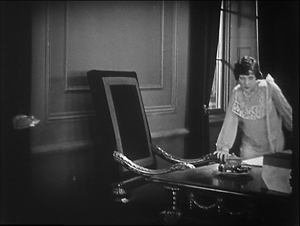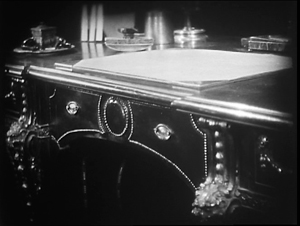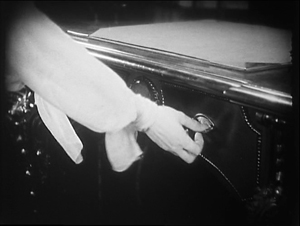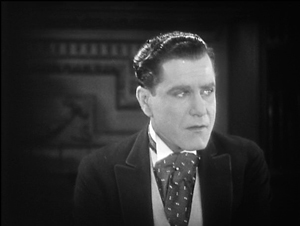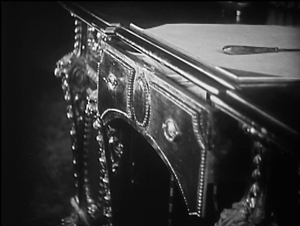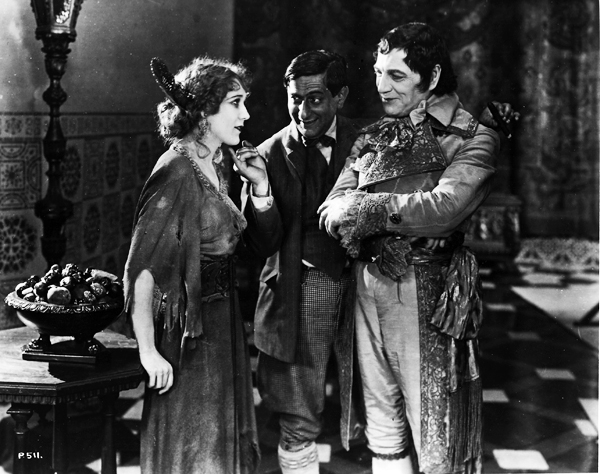DB here:
All artists rely on predecessors in one way or another. True, at any moment the artist may confront a dizzying array of options; there are a lot of models out there. And sometimes artists work against received traditions rather than building on them. (Usually, though, those assaults on tradition borrow from other traditions, often minor ones.)
Anyhow, it’s a good first move to assume that any artwork we encounter owes something to forebears. If we want to understand continuity and change in film history, then, we can try to know something about genes, styles, received habits, work routines, and other ongoing pressures on moviemakers.
Schema and revision
Favorites of the Moon (Iosseliani, 1984).
Among the strategies for making sense of a given film or filmmakers, one I’ve found useful I’ve swiped from E. H. Gombrich. In Art and Illusion, he wrote of schema and revision as one way of thinking about an artist’s ties to tradition. A schema is a pattern that has proven reliable for art-making in the past. His examples are the geometrical templates that became part of the training of Western European artists.
Gombrich suggests that artists adapt the schemas to the purposes at hand–new tasks, or the urge to capture aspects of reality that their predecessors missed.
Once a hack has learned how to make the image of a tolerably convincing head, he may be tempted to use this standard formula for the rest of his days, merely adding just such distinguishing features as will mark the admiral or the court beauty. But obviously once he is in possession of a standard head, he can also use it as a starting point for corrections, to measure all individual deviations against it. He may first draw it on his canvas or in his mind, not in order to complete it, but to match it against the sitter’s head and enter the differences onto his schema.
Hence the Gombrichian slogan: Making precedes matching. You render a version of visual reality in and through the forms bequeathed to you by tradition, adjusting them as you may need.
In film, I suggested in On the History of Film Style, we have several stylistic schemas. A prototype would be shot/ reverse-shot staging and cutting. You can replicate the schema, just running it again, as most filmmakers do. (All those damn shoulders.) You can revise it, as Ozu, Bresson, and other filmmakers did. You can adapt it to the long take, as Hitchcock and Iñarritu did [5]. Or you can reject it, as Tati and Iosseliani did with their extreme long-shots. Iosseliani: “As soon as I see a film that begins with a series of shots and reverse shots, with lots of dialogue and well-known actors, I leave the room immediately. That’s not the work of a film artist.”
Stylistic schemas are perhaps the easiest to spot; when they cluster, we get something like a style in a general sense, such as continuity editing, or more recently what I’ve called “intensified continuity.” [6] Even minor genres, like long-take lipdubs [7], have their own schemas. And revisions are ongoing. In mother! Darren Aronofsky fills the “free-camera,” [8] run-and-gun handheld style, which usually favors medium shots [9], with extreme close-ups that put menacing, barely identifiable action in out-of-focus backgrounds. The result can be seen as a revision of the blink-and-you’ll-miss-it reframings [10] on display in the Bourne films [11].
There are schemas for narrative too. At the broadest level, the sacred Three-Act Structure [12] can be thought of as a macro-schema; so too the more fleshed-out Four-Part Structure [13] Kristin has proposed. In my new book Reinventing Hollywood, I invoke the schema/revision idea to talk about more specific narrative strategies of the 1940s. Examples are the flashback plot, with a shuttling between present and past, and the network narrative, which brings friends, kinfolk, and strangers together in a limited time or space.
Watching Ernst Lubitsch’s Rosita (1923) again at the Venice Film Festival [14] reminded me that the schema/revision process can take place not just between the filmmaker and tradition but within the work of a director. Once a director develops a “signature style,” that too can be reworked, refined, stretched, or even repudiated. Griffith recast his characteristic last-minute-rescue crosscutting pattern, once by making the rescue too late (Death’s Marathon), and once by multiplying it by four (Intolerance). Ozu not only revised Hollywood continuity principles, but then tweaked and played games with his customized version. Arguably, Hitchcock did the same with his refined point-of-view structures and man-on-the-run plot patterns.
In the Lubitsch case I’m considering, we have a very tiny piece of schema revision, but one that shows him to be a fastidious creator. Having sculpted a small moment one way, he extracted its principles and remade it, for other purposes in another film.
The grapes
The street singer Rosita is in the palace waiting for the king. At first she’s awed by the scale of the room, but then she spies a bowl of candied fruit on a little table. As often happens in Lubitsch’s American silents., this plays out through eyeline cutting.
Rosita heads out of her shot and a frame-edge cut brings her to the table. She drifts past the fruit, eyeing it, and now the sequence’s rhythm is established.
When Rosita leaves the frame, the camera holds on the table and the fruit bowl.
After a beat, she strolls into the frame moving right, pointedly ignoring the fruit. She goes out of frame and Lubitsch holds on the bowl.
Then Rosita comes in from offscreen right and plucks a grape as she passes through the frame. Lubitsch holds the empty shot.
Rosita comes in again from the left, snags another grape, and walks out frame right.
After another beat, she thrusts back into the frame and starts to dig into the fruit.
She’s hungry but afraid of being caught, so she swipes the food as casually as she can. Once she thinks she’s not being watched, she can take what she wants.
Instead of cutting the action up, Lubitsch holds the shot and makes a sort of contract with the viewer. The gag depends on simple spatial continuity; we know where Rosita is when she’s out of frame, so we can anticipate her coming back in and wonder what she’ll do on the next pass. By holding on the table, the camera “knows” she’s coming back and waits for her; the bowl draws her like a magnet. We enjoy the game of expectation Lubitsch has set up.
Simple as it is, this passage shows the patterned nature of a stylistic schema. You could plug different things into that pattern—a bed rather than a table, a gun on a counter, a detective casually looking for clues—but as long as you set up the pause holding on the “empty” frame as the actor passed through to and fro, we’d have a recognizable schema. It’s one that other filmmakers could use.
Or one that Lubitsch himself could cleverly revise. If the Rosita version builds a mild sort of suspense, what if we added a dose of surprise? That’s what happens in Lady Windermere’s Fan (1925).
The drawer
Lord Darlington, hoping to drive a wedge between Lady Windermere and her husband, suggests that she look for a check Lord W wrote to the mysterious Mrs. Erlynne. Lady W walks into the study and pauses at her husband’s desk, then goes to sit in a chair nearby.
Like Rosita studying the fruitbowl, she eyes the desk drawer holding the check.
She rises and, thanks to another frame-edge cut, walks to the desk. But thinking the better of it, she leaves the frame, going out left.
The camera stays on the desk. Pause.
Suddenly Lady W bursts into the frame, but from the right side.
Lubitsch, who understood the rules of continuity better than almost anybody, knew perfectly well that she should have come back in from the left. The actor had to go around behind the camera in order to come in from this “impossible” angle. We’d be startled to some extent if Lady W had suddenly burst in from the left, but now the effect is amplified by the unpredictable entrance from the right. To spatial suspense, holding on the desk, Lubitsch has added spatial surprise.
Interestingly, there’s another anomaly here: the early POV shot of the drawer. It represents what Lady W sees, but from the opposite angle, from the “other side” of the desk. A shot respecting her vantage point would have looked like this.
Since this is a silent film, even if Lubitsch had made a mistake during filming, the shot could have been flipped in postproduction to look correct. It’s just possible that this “wrong” POV shot is another schema revision–one that anticipates Lady W’s “wrong” reentry into the desk shot. This possibility is strengthened soon afterward when Lady W tries to open the drawer, in a framing that shows the “correct” angle.
And soon afterward, when Lord Windermere joins his wife, he will look at the drawer from the “correct” angle as well.
A spare take of his POV shot could have replaced Lady W’s mismatched one. (Though the fastidious Lubitsch gives us a slightly different angle from Lady W’s, one corresponding to the position of Lord W). It seems likely, then, that Lubitsch simply wanted Lady W’s odd POV shot. Perhaps he saw it as a cryptic hint that something important was about to happen on the other side of the desk, where Lady W will pop in.
With Lubitsch, we’re always getting into such pictorial niceties. In any case, having tried out the “waiting camera” schema in Rosita, garnished it with predictable frame entrances and exits, Lubitsch revised the schema to create a different effect. He knew that audiences would expect Lady W to reenter the way Rosita did, and he exploited our expectations to yield a bump of surprise–one that increases the expressive effect of her pouncing on her husband’s secret.
More generally, the concept of schema/revision seems to me a useful tool for studying a filmmaker’s ties to tradition, as well as his or her developing personal style. This is not to mention the role of rivalry, another important pressure for continuity and change in film craft. Once a schema is out there, people can compete for ways to revise it. But that’s a topic for another day.
My frames from Rosita are from the standard, rather bad surviving print. It has recently been restored by the Museum of Modern Art under the auspices of Dave Kehr, and the new version looks very fine. More information here [14].
The illustration of heads comes from Erhard Schön’s manual of 1538, reproduced in Gombrich’s Art and Illusion (Princeton University Press, 1960), p. 159; my quotation comes from p. 172.
The quotation from Iosseliani comes from “Iosseliani on Iosseliani,” in The 24th Hong Kong International Film Festival Catalogue (Hong Kong: Urban Council, 2000), p. 138.
Kristin provides close analysis of Lubitsch’s silent film style in Herr Lubitsch Goes to Hollywood: German and American Film after World War I, available online here [41]. I discuss this sequence from Lady Windermere in more detail in Chapter 9 of Narration in the Fiction Film. But when I wrote that, I hadn’t seen Rosita. I consider how Ozu varied his bespoke version of continuity editing in Chapters 5 and 6 of Ozu and the Poetics of Cinema, available online here [42].
Fruitbowl, Mary Pickford, Ernst Lubitsch, and Holbrook Blinn on the set of Rosita.
